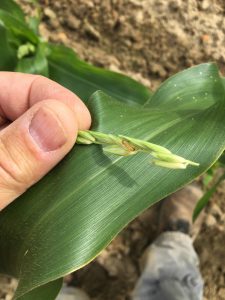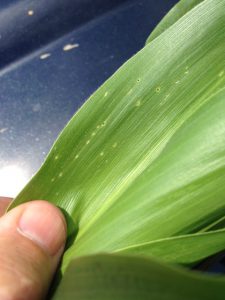The NEWA (Network for Environment and Weather Applications) website managed by the New York state Integrated Pest Management (IPM) program can be found at http://newa.cornell.edu/. The website is easy to use and offers weather data as well as insect and disease forecasting (e.g., P-days for Early blight and BlightCast for Late Blight in potato, and Tom-Cast DSV’s for Early blight, Septoria leaf spot and Anthracnose fruit rot in tomatoes. Just click on the map and scroll down to New Jersey and chose a weather station within the closest proximity to your operation. Once you choose a location a new webpage will appear with the different forecasting options to choose from. Clicking on the potato early blight will automatically generate daily and accumulative P-day values for you for that location. Remember once 300 P-days are accumulated, spray programs for early blight control should be initiated. Clicking on either tomato or potato Late blight will bring up a table which will provide daily rainfall, average temperature, hours above 90% RH and daily and accumulative DSV values for that location. One important thing to remember for the disease forecasting is to track the accumulation of DSV or P-day values based on when you transplanted tomatoes or when potatoes emerged on your farm.
To track the progress of Late blight in the US you may also visit http://usablight.org/




